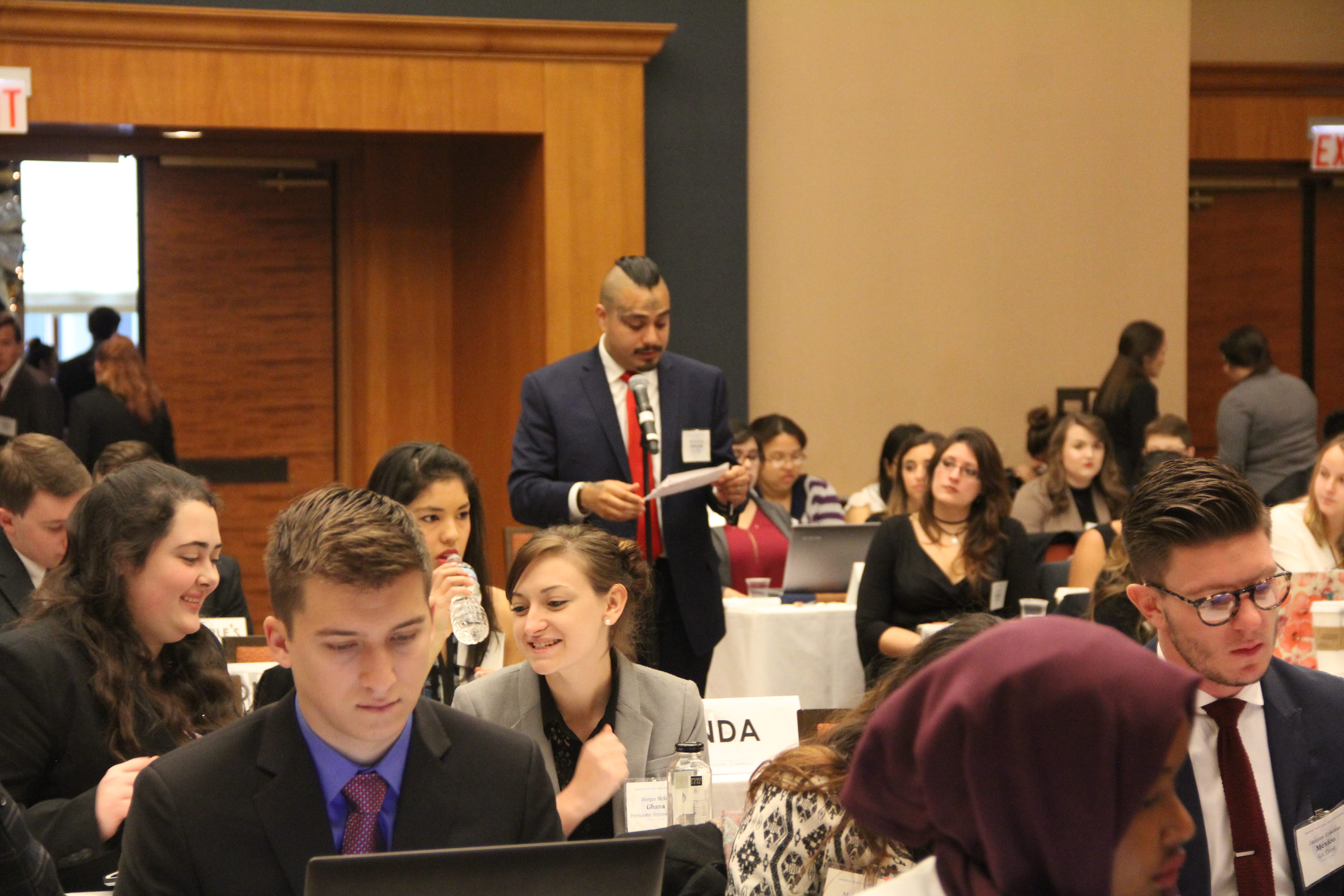
Speeches and Motions

Precedence of Speeches and Motions
Giving speeches and making motions are two critical ways to move formal debate forward in a Model UN session.
At AMUN, we do not use a formal speakers’ list (we’ll have more on that decision in a future blog post). Instead, you’ll often hear chairs or presidents say, “The Chair is now looking for speakers or relevant motions,” which signifies that delegations should raise their placards to indicate a desire to address the body.
Sometimes our chairs are asked, “I just want to make a motion. Shouldn’t that have precedence over someone who is making a speech?” But this is really a misconception. If there is a motion on the floor, the body needs to vote on it before hearing further speeches, although a motion of higher precedence would be in order at that time. In this case, a chair or president might ask, “are there any relevant motions at this time?” But if there is no motion on the floor, then “speeches” and “motions” have the same precedence—that is, they have the same importance.
But why is this? The simplest answer is to think about when a motion is in order. Making a motion is one of the ways to end a speaker’s time on the floor. In reality, motions and speeches aren’t two different things, but are each allowable when a speaker is recognized to address the body. Until there’s a motion on the floor, the priority of procedural motions is not in play.
After being recognized to speak, a delegation that has the floor may do anything allowable under the rules of procedure during that time. The delegation can speak, then choose to take Points of Inquiry (or not). When the speaker is done, he or she can end a speech on the floor in one of two ways: by yielding the floor to the chair (i.e., sitting down) or by making a motion.
If all a speaker does when recognized is to make a motion—that’s fine. Just imagine they’ve given the world’s shortest speech. At that point, delegations may raise their placards if they wish to make a motion of higher precedence. If there is no motion of higher precedence made—then the committee moves into a vote on the motion. And after that, the process starts over again, with the chair looking for speakers or motions.
Simple, right?
Keep Up With The Accords
More to read
The AMUN Accords is a premier resource for fact-based Model United Nations simulations. We are always looking for new contributors. Want to write for the AMUN Accords? Check out out the submission guidelines and then get in touch!




